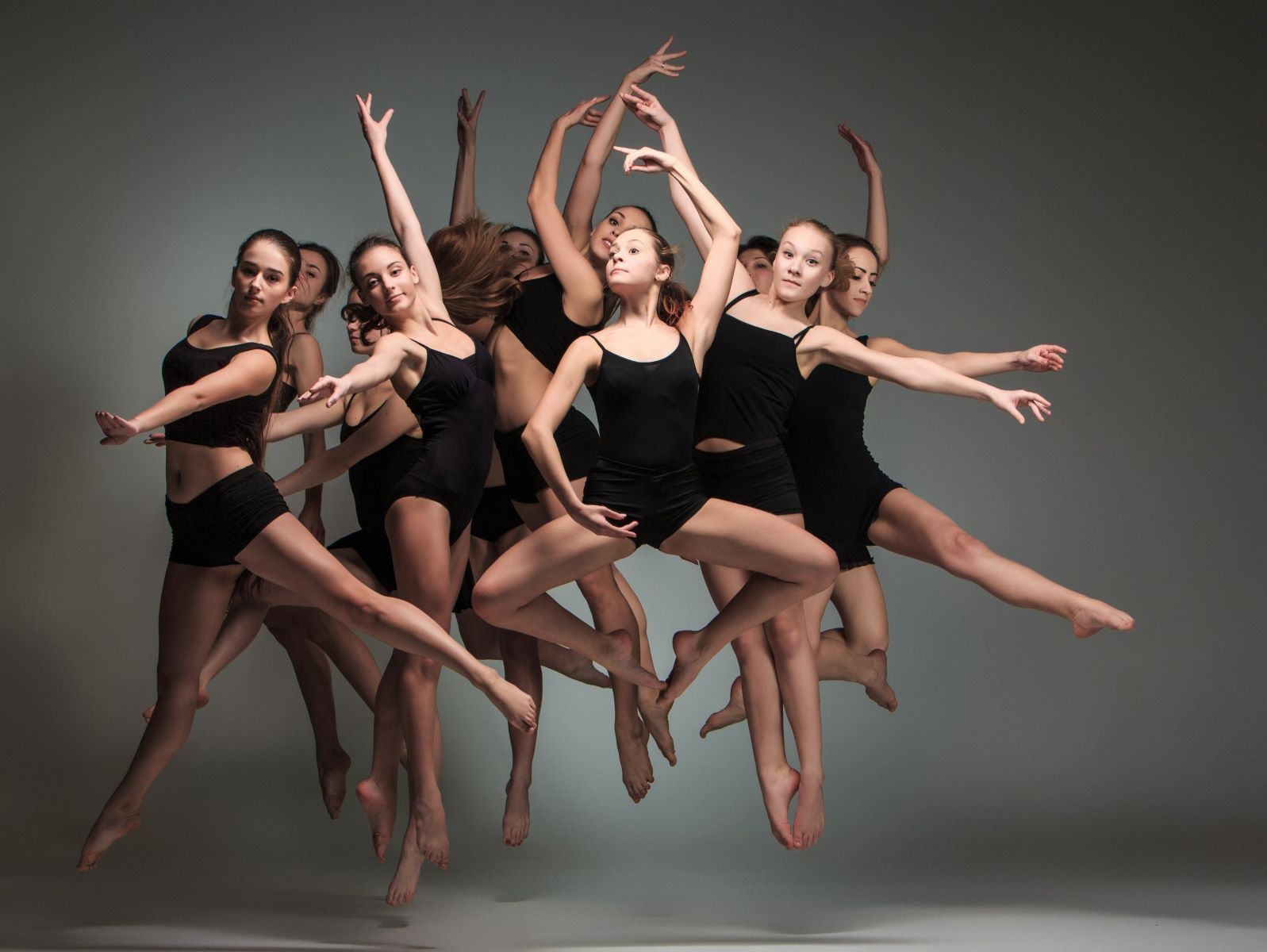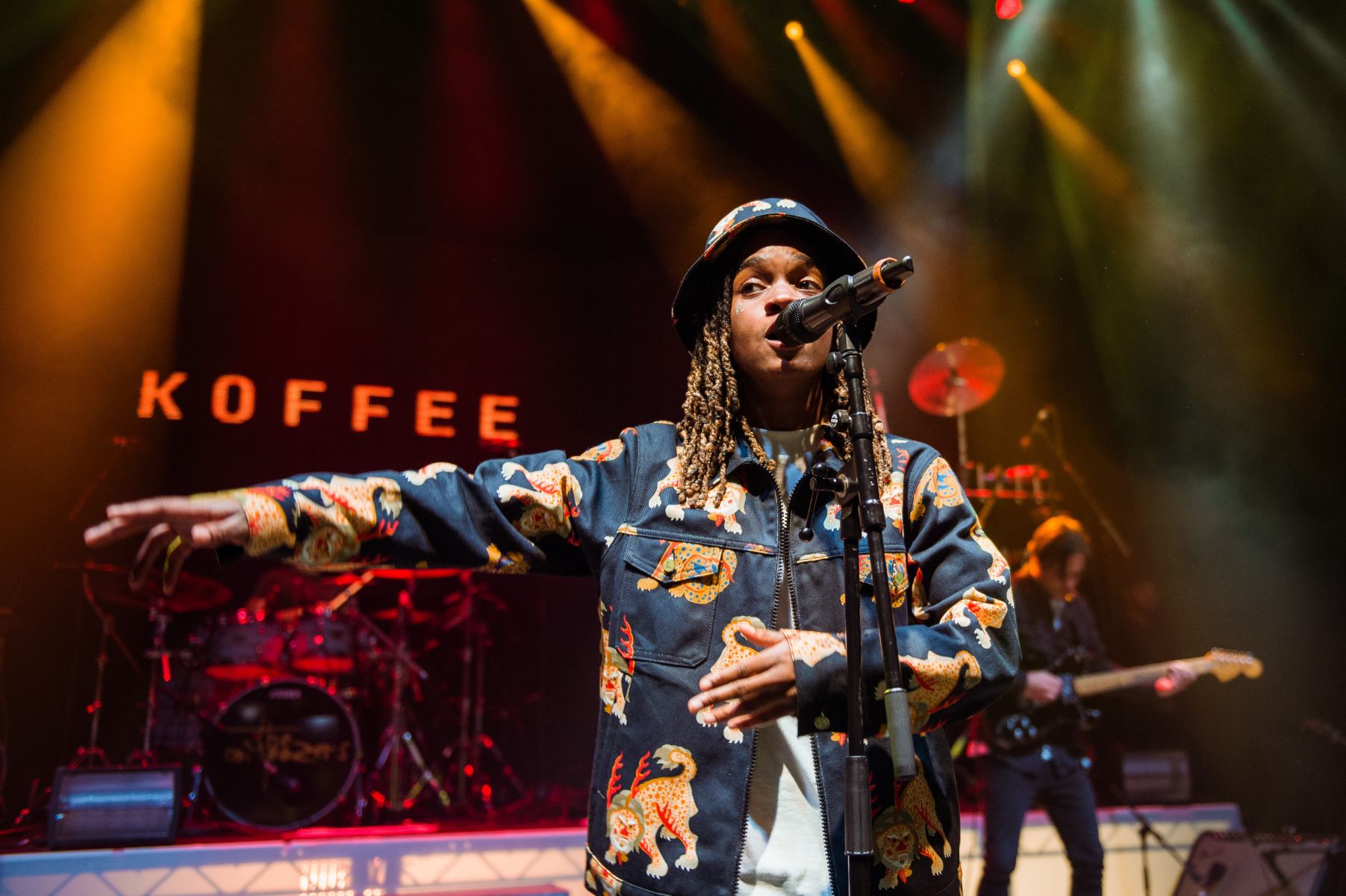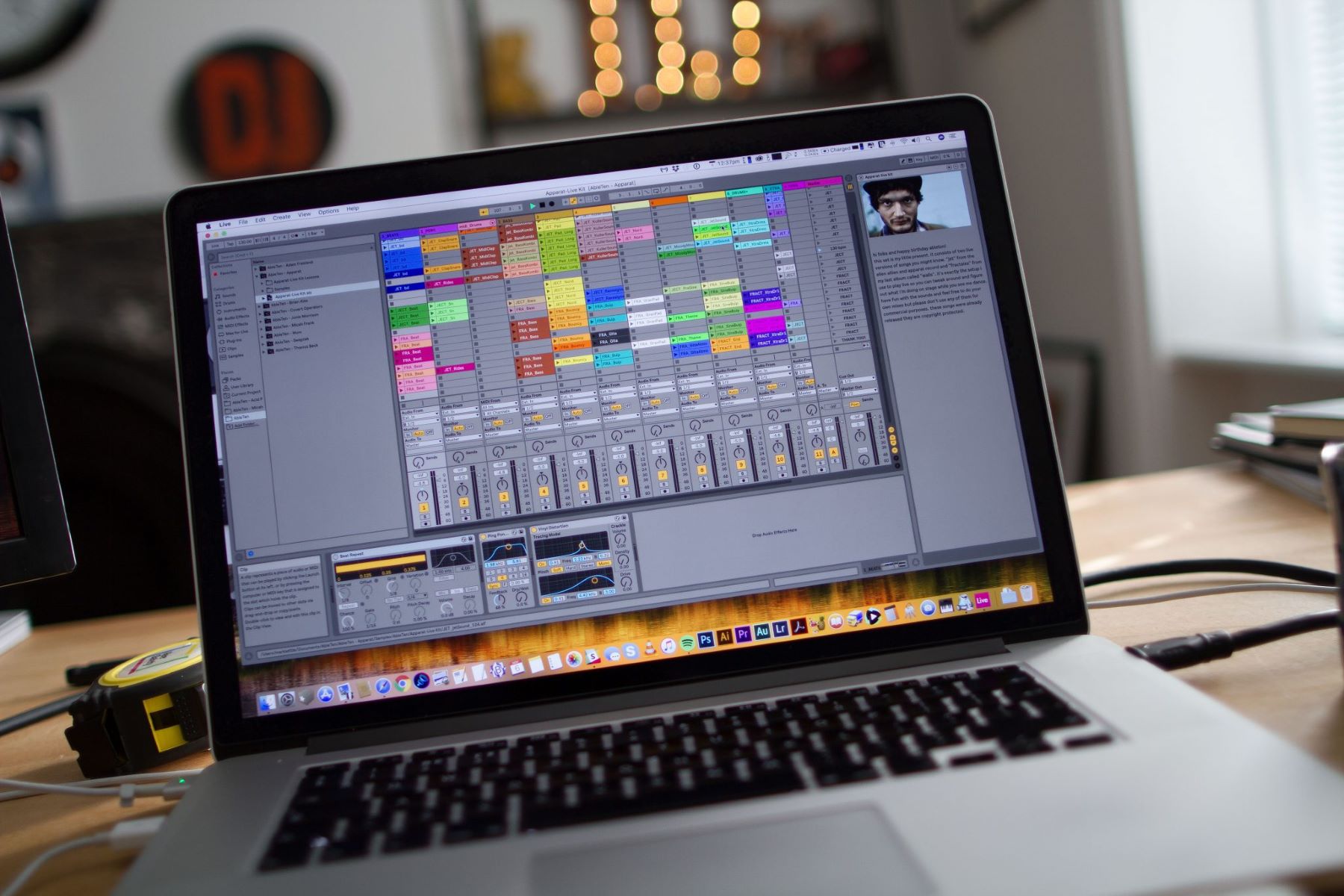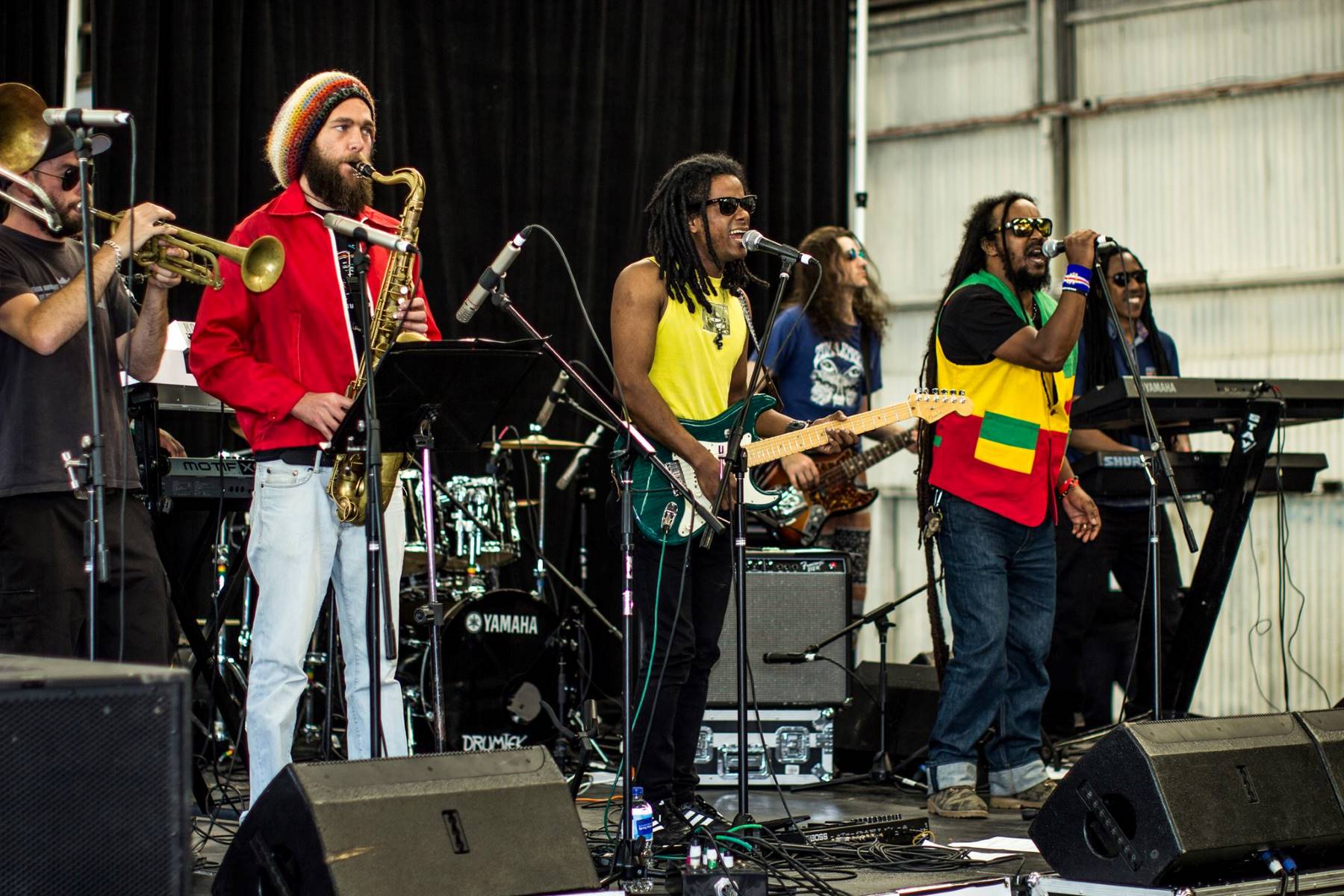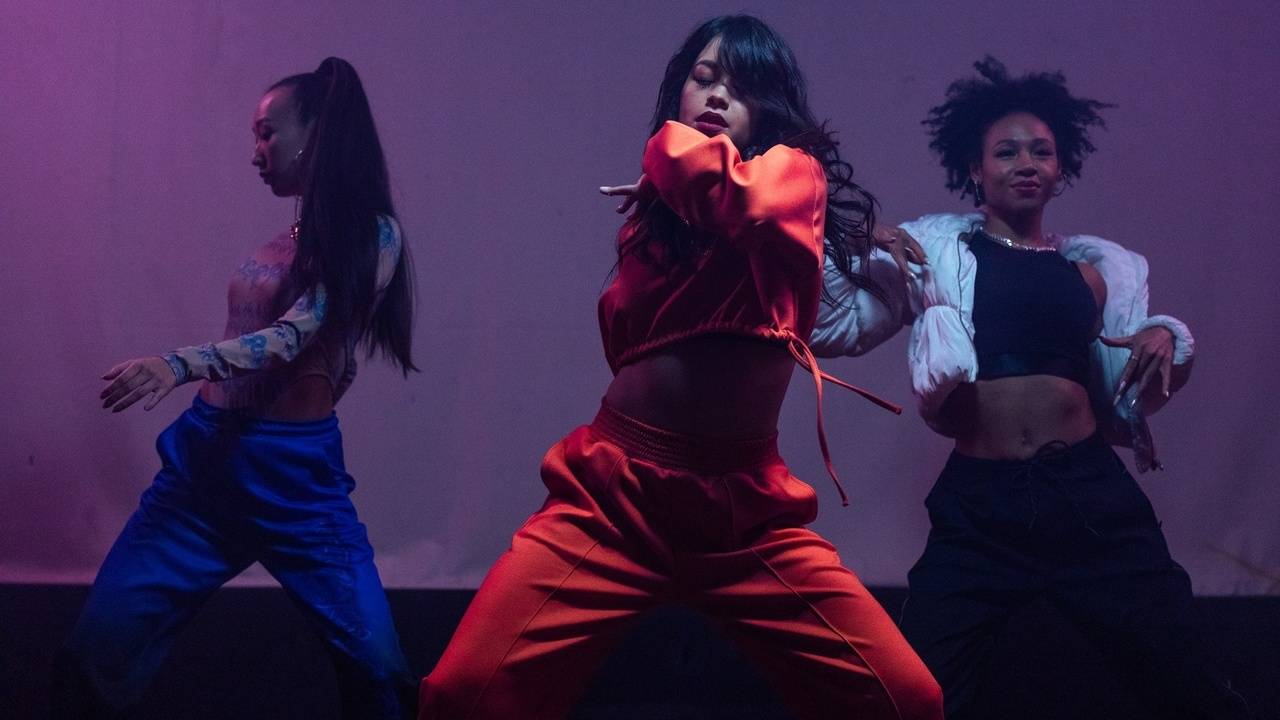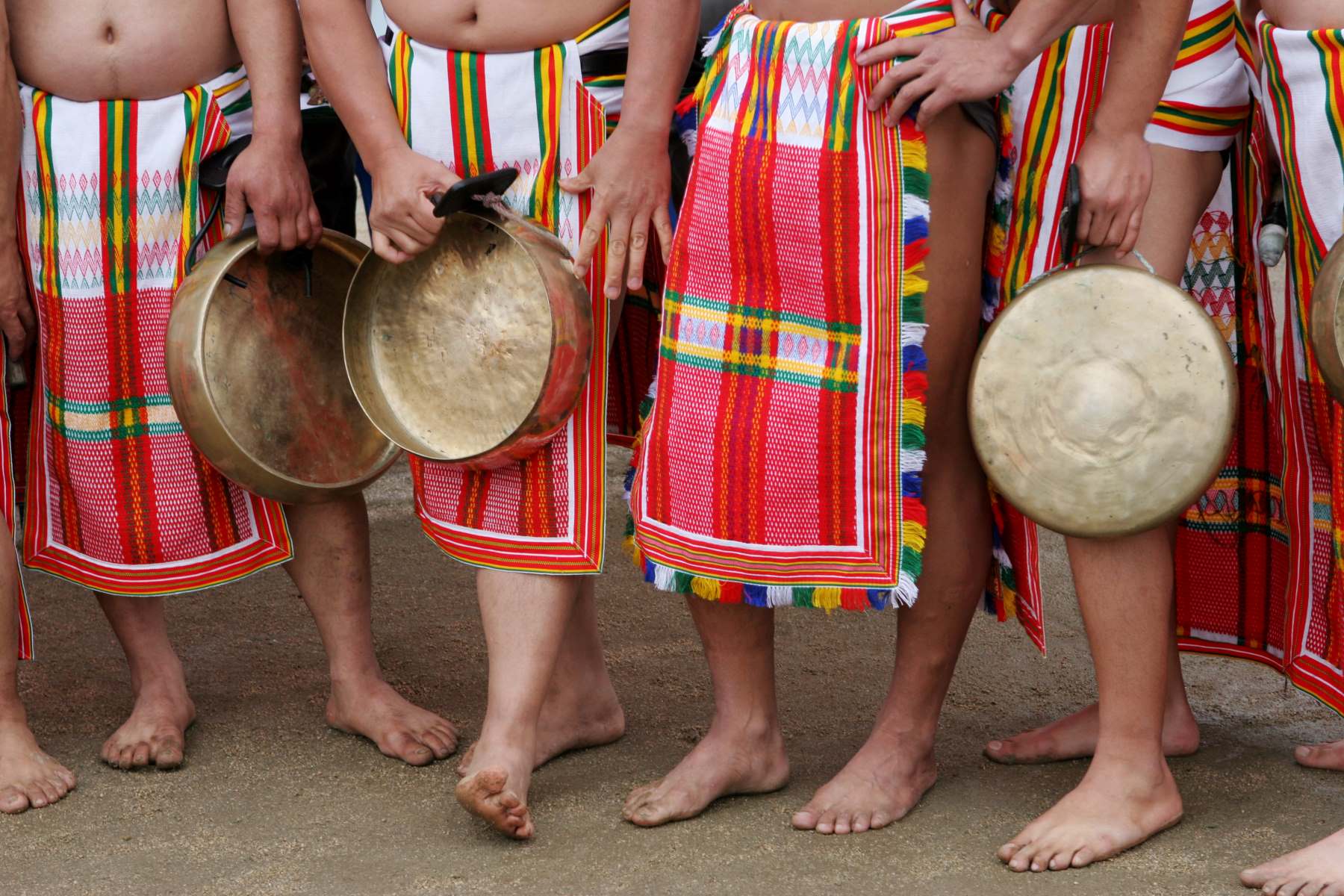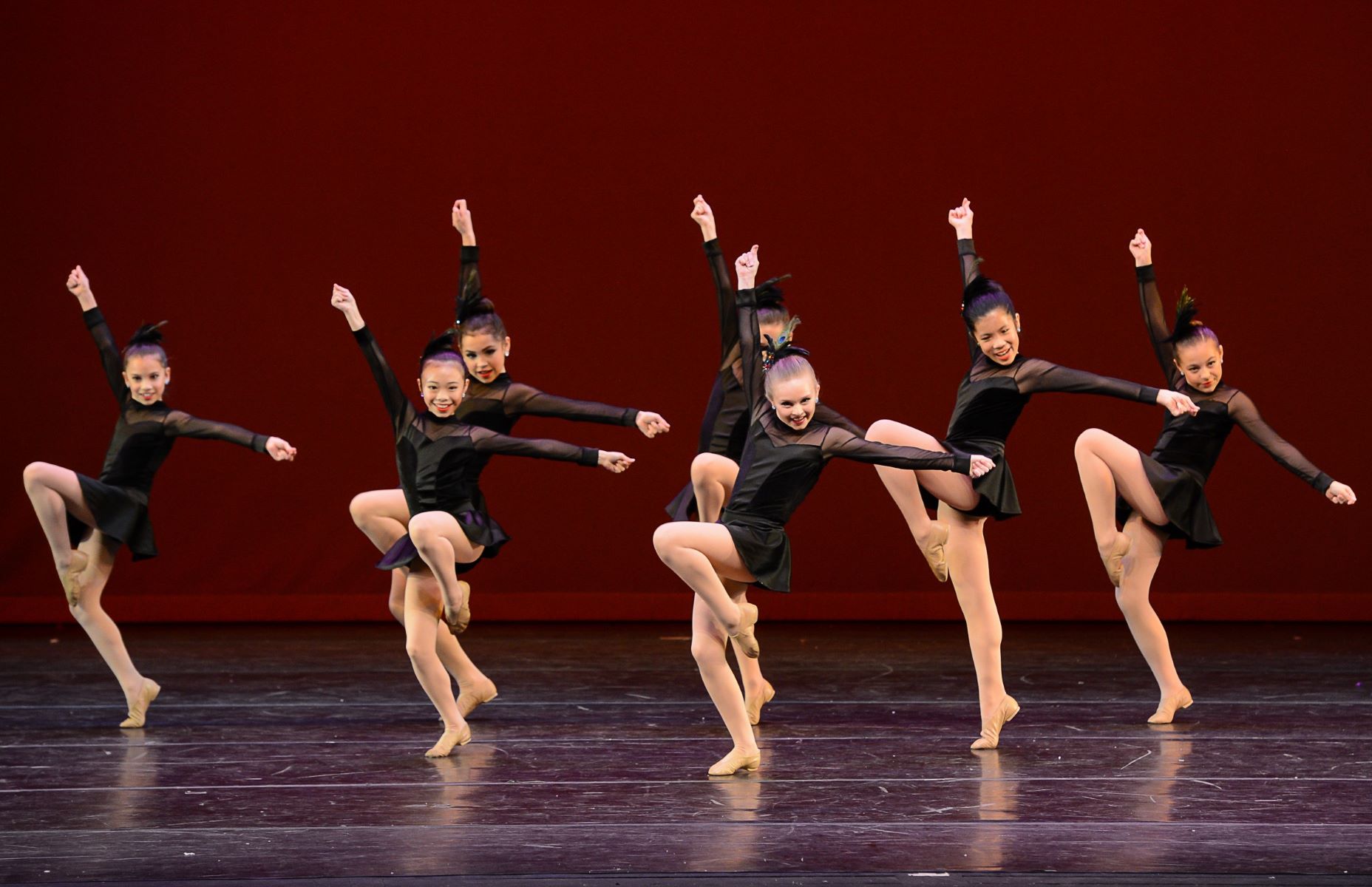

Reggae
How To Dance Reggae
Modified: January 22, 2024
(Many of the links in this article redirect to a specific reviewed product. Your purchase of these products through affiliate links helps to generate commission for AudioLover.com, at no extra cost. Learn more)
Table of Contents
Introduction
Welcome to the world of reggae dance! If you’re a fan of reggae music and want to groove to the infectious rhythms, learning how to dance reggae is a fantastic way to express yourself and immerse yourself in the vibrant culture of reggae.
Reggae dance is a unique form of dance that originated in Jamaica in the 1960s. It evolved alongside reggae music and captures the essence of the music’s laid-back yet energetic vibe. Reggae dance is characterized by its relaxed, swaying movements combined with bursts of energy and rhythmic footwork.
Reggae dance is a perfect blend of joy, freedom, and individuality. It allows dancers to express their emotions and connect with the music on a deeper level. Whether you’re a seasoned dancer or a beginner, reggae dance offers a welcoming and inclusive environment for everyone to join in the fun.
In this comprehensive guide, we will explore the basics of reggae dance, different reggae dance styles, techniques for learning reggae dance moves, and tips for improving your skills. By the end, you’ll have the knowledge and confidence to hit the dance floor and move to the groove of reggae music like a pro.
Understanding the Basics of Reggae Dance
Before diving into the various reggae dance styles and moves, it’s essential to understand the fundamentals of reggae dance. Reggae dance is rooted in the rich cultural heritage of Jamaica and incorporates elements of African, Caribbean, and Western dance styles. It’s a combination of fluid movements, rhythmic footwork, and expressive gestures that synchronize with the music.
The key aspect of reggae dance is maintaining a relaxed and fluid body posture. Unlike many other dance styles that require tight and controlled movements, reggae dance encourages dancers to let loose and allow their bodies to naturally respond to the music. The movements are slow and deliberate, yet infused with bursts of energy and syncopated footwork.
At its core, reggae dance emphasizes the connection between the body, mind, and music. It’s not just about executing the moves correctly but also about feeling the music deep within and letting it guide your movements. This connection creates a unique and soulful dance experience.
Reggae dance is all about expressing yourself and showcasing your individuality. It’s not about following rigid rules or steps but rather about letting your body interpret the music and adding your personal flair to the dance. This freedom of expression is what makes reggae dance so captivating and empowering.
One important aspect of reggae dance is understanding the rhythm and beat of reggae music. Reggae music typically follows a 4/4 time signature with a distinctive off-beat feel. Learning to identify the rhythm and sync your movements with it is crucial for mastering reggae dance. The off-beat feel is what gives reggae music its laid-back groove, and dancers should incorporate this into their movements.
Another essential element is body isolation. Reggae dance involves isolating different body parts, such as the hips, shoulders, and chest, and moving them independently to create a dynamic and rhythmic dance style. This technique adds depth and complexity to your movements, making your dance more visually appealing and engaging.
Exploring Reggae Dance Styles
Reggae dance encompasses a variety of styles and variations, each with its own unique characteristics. Let’s dive into some of the popular reggae dance styles:
- Dancehall: Dancehall is a high-energy and dynamic dance style that originated in Jamaica. It incorporates elements of reggae, hip hop, and street dance. Dancehall movements are often fast-paced, with intricate footwork, body isolations, and acrobatic flips and tricks. This style is known for its infectious energy and infectious spirit.
- Ska: Ska dance style is derived from the early days of reggae music. It features a lively and uptempo rhythm, and the dance movements are characterized by quick footwork and energetic arm movements. Ska dance is often performed in pairs or groups, with dancers moving in sync with each other.
- Rocksteady: Rocksteady is a slower, soulful dance style that emerged in the late 1960s. It is characterized by smooth, flowing movements and close partner dancing. Rocksteady dance often focuses on the connection between partners and the expression of emotions through synchronized movements.
- Nyabinghi: Nyabinghi dance style originated from the Rastafarian religious ceremonies in Jamaica. It involves slow, deliberate movements with an emphasis on spirituality and connection to African roots. Nyabinghi dance often incorporates ritualistic elements and symbolic gestures.
These are just a few examples of the many reggae dance styles out there. Each style has its own unique flavor and allows dancers to express different aspects of reggae music and culture. Whether you prefer the high-energy moves of Dancehall or the smooth and soulful style of Rocksteady, exploring different reggae dance styles can add depth and versatility to your dancing.
Learning Reggae Dance Moves
Learning reggae dance moves is an exciting and engaging process that allows you to immerse yourself in the rhythmic world of reggae music. Here are some tips and techniques to help you master reggae dance moves:
- Start with the basics: Begin by familiarizing yourself with the foundational steps of reggae dance. These include swaying your hips side to side, rocking your shoulders, and bending your knees while maintaining a relaxed posture. Practice these basic movements until you feel comfortable and can sync them with reggae music.
- Focus on rhythm: Reggae music has a distinct off-beat rhythm. To dance to reggae music effectively, it’s important to develop a keen sense of timing and rhythm. Listen to reggae tracks and try to identify the off-beat accents. Practice moving your body in sync with these accents to create a cohesive and authentic reggae dance experience.
- Isolate body parts: Reggae dance often involves isolating different body parts and moving them independently. Practice isolating your hips, shoulders, chest, and arms. Learn to control each body part separately, allowing them to move fluidly and rhythmically. Focus on precision and coordination to perfect your body isolation skills.
- Incorporate footwork: Rhythmic footwork is an essential component of reggae dance. Experiment with different footwork patterns, including shuffling, stepping, and sliding. Mix up your footwork to add variety and complexity to your movements. Remember to stay light on your feet and let the music guide your footwork.
- Watch and learn: Utilize online resources, tutorial videos, and dance classes to observe and learn from experienced reggae dancers. Study their movements, techniques, and style. Pay close attention to the details and nuances of their dance. Practice emulating their moves and add your unique interpretation to make them your own.
- Practice freestyle: Once you have a solid foundation of reggae dance moves, unleash your creativity and explore freestyle dancing. Reggae dance is all about expressing yourself and adding your personal touch. Let go of inhibitions, trust your instincts, and allow the music to guide your movements. Freestyle dancing will help you develop your unique style and enhance your improvisational skills.
Remember, mastering reggae dance moves takes time and practice. Be patient, stay dedicated, and enjoy the journey. As you continue to expand your repertoire of moves and refine your technique, you’ll become more confident and effortlessly groove to the rhythm of reggae music.
Developing Rhythm and Flow
Rhythm and flow are the heart and soul of reggae dance. Developing a strong sense of rhythm and a smooth flow in your movements will greatly enhance your reggae dance skills. Here are some tips to help you improve your rhythm and flow:
- Listen to reggae music: Immerse yourself in reggae music by listening to a wide range of tracks from different eras and artists. Pay attention to the grooves, the beat, and the overall feel of the music. The more you familiarize yourself with reggae music, the better you’ll understand its rhythm and be able to sync your movements to it.
- Focus on the bassline: Reggae music is known for its prominent bassline. Train your ears to follow the bassline and let it guide your movements. The bassline gives you a solid foundation and helps you stay grounded in the rhythm of the music. Feel the vibrations and use them as cues to enhance your dance flow.
- Practice counting: While reggae music may have an off-beat feel, it’s beneficial to practice counting along with the music. Counting helps you internalize the rhythm and allows you to anticipate the different accents and beats. As you become more comfortable with counting, you’ll naturally develop a stronger sense of rhythm and flow in your dance.
- Work on your body control: Developing body control is crucial for maintaining a smooth flow in your movements. Practice exercises that focus on isolating different body parts, such as rolling your shoulders, moving your hips, and articulating your arms. The more control you have over your body, the more precision and fluidity you can achieve in your reggae dance.
- Study professional reggae dancers: Watch videos of experienced reggae dancers and study their movements closely. Pay attention to their rhythmic timing, body flow, and transitions between steps. Analyze how they interpret the music and incorporate it into their dance. Observing professionals can provide valuable insights and inspiration for improving your own rhythm and flow.
- Improvise and let go: Once you have a solid foundation of reggae dance moves and rhythm, it’s important to let go of strict choreography and allow your body to freely express itself. Embrace improvisation and let the music guide your movements. Trust your instincts, relax, and let your body naturally flow with the rhythm. This will help you develop a unique dance style and make your movements more fluid.
Remember, developing rhythm and flow in reggae dance is an ongoing process. It takes time and practice to internalize the music, refine your movements, and find your personal groove. Embrace the journey, have fun with the music, and let your body sway to the soulful rhythms of reggae.
Tips for Improving Your Reggae Dance Skills
If you’re looking to take your reggae dance skills to the next level and enhance your overall performance, here are some valuable tips to keep in mind:
- Stay relaxed: Reggae dance is all about maintaining a relaxed and fluid body posture. Tension in your muscles can hinder your movements and restrict your flow. Focus on releasing any unnecessary tension and allowing your body to move freely. Relaxation will not only make your dance more visually appealing but also help you connect with the music on a deeper level.
- Practice regularly: Like any other skill, practice is essential for improving your reggae dance abilities. Set aside dedicated practice sessions to work on your movements, footwork, and body control. Consistent practice will help you build muscle memory, improve your technique, and increase your overall confidence on the dance floor.
- Vary your speed and energy: Reggae music is diverse, ranging from slow and soulful to fast and energetic. Experiment with dancing to different tempos and energy levels. Practice switching between slow, controlled movements and quick, dynamic footwork. Being able to adapt your dance style to different reggae songs will make you a versatile and captivating dancer.
- Record and review your dance: Utilize technology to record your reggae dance sessions. Watching yourself on video allows you to objectively assess your technique, rhythm, and overall performance. Take note of areas where you can improve and work on refining those specific aspects. Additionally, recording your dance can serve as a valuable tool for tracking your progress over time.
- Expand your reggae music library: Explore different sub-genres of reggae and expand your music library. Exposing yourself to a wide range of reggae tracks will expose you to diverse rhythms, beats, and moods. Dancing to different reggae songs will challenge you to adapt your movements and help you become a more versatile dancer.
- Join a dance community or class: Engaging with a dance community or taking reggae dance classes can significantly boost your skills. Interacting with fellow dancers and learning from experienced instructors provides valuable feedback, motivation, and inspiration. Additionally, participating in dance events and workshops immerses you in the vibrant reggae dance culture and fosters growth as a dancer.
Remember, improving your reggae dance skills is a continuous journey. Be patient, embrace challenges, and enjoy the process of growth. With consistent practice, an open mindset, and love for the music, you can become a confident and captivating reggae dancer.
Common Mistakes to Avoid in Reggae Dance
When learning and practicing reggae dance, it’s important to be aware of common mistakes that beginners often make. By identifying and avoiding these mistakes, you can improve your technique and overall performance. Here are some common mistakes to watch out for:
- Tensing up: One of the most common mistakes in reggae dance is tensing up the body. Remember to stay relaxed and let your body flow with the music. Tension can restrict your movements and hinder your ability to connect with the rhythm. Focus on maintaining a loose and fluid body posture.
- Neglecting body isolation: Reggae dance relies heavily on body isolations. Neglecting to isolate different body parts can make your dance appear stiff and lacking in dynamics. Practice the art of isolating your hips, shoulders, and chest to add depth and complexity to your movements.
- Ignoring footwork: Footwork plays a vital role in reggae dance. Neglecting footwork can make your dance look incomplete and lack rhythm. To improve, focus on learning and mastering various footwork patterns, such as shuffling, stepping, and sliding. Incorporate footwork seamlessly into your dance to enhance your overall performance.
- Lack of musicality: Reggae dance is closely tied to the rhythm and beat of reggae music. Many beginners struggle to connect their movements with the music, resulting in dances that feel disconnected and out of sync. Practice counting, recognizing the accent beats in a song, and developing a strong sense of musicality to improve your dance’s synchronicity.
- Copying without adding your flair: While it’s important to learn from experienced reggae dancers, avoid simply copying their moves without adding your own personal touch. Reggae dance is about expressing yourself and showcasing your individuality. Experiment with different variations and styles to develop a unique dance style that reflects your personality.
- Overcomplicating movements: It’s easy to get caught up in trying to execute complicated moves and combinations. However, remember that simplicity can often be more impactful in reggae dance. Focus on nailing the fundamentals and perfecting your technique before attempting more complex movements. Clean and precise execution of basic moves is key to creating an impressive dance routine.
- Not engaging with the audience: Reggae dance is not just about moving your body, but also about connecting with the audience. Don’t forget to make eye contact, smile, and engage with those watching you. Show your passion and energy in your movements to create a captivating performance that resonates with the audience.
By being mindful of these common mistakes and actively working to avoid them, you can refine your technique, improve your dance quality, and elevate your overall reggae dance skills.
How to Dance with Confidence
Dancing with confidence is a key element in delivering a captivating reggae dance performance. When you dance with confidence, you radiate joy, passion, and authenticity, captivating both yourself and your audience. Here are some tips to help you dance with confidence:
- Believe in yourself: One of the most important aspects of dancing with confidence is having belief in your own abilities. Embrace your unique style, trust your training, and have confidence in your skills. Remember that everyone has their own journey, and it’s okay to make mistakes. Embracing your own dance journey will give you the confidence to showcase your talent to the world.
- Practice, practice, practice: Building confidence comes with practice. The more you practice your reggae dance moves and routines, the more comfortable and confident you will become. Take the time to rehearse regularly, both in a studio or at home, to refine your technique and familiarize yourself with the music. The more you practice, the more confident you will feel in your performance.
- Focus on your strengths: Recognize and accentuate your strengths as a dancer. Everyone has unique qualities that make them shine on the dance floor. Whether it’s your musicality, body isolations, or footwork, highlight those strengths in your dance. By focusing on what you do well, you will exude confidence and showcase your best self to the audience.
- Embrace mistakes as learning opportunities: Mistakes are a natural part of the learning process. Don’t let them discourage you or undermine your confidence. Instead, view mistakes as opportunities for growth and improvement. Embrace them, learn from them, and use them to refine your skills. Remember that even the most experienced dancers make mistakes, and it’s the ability to bounce back and continue dancing that truly displays confidence.
- Connect with your emotions: Reggae music is emotive and soulful, and connecting with your emotions will help you dance with conviction and confidence. Allow yourself to feel the music and let those emotions guide your movements. Dance from your heart and let your genuine passion shine through. When you dance with deep emotional connection, you will captivate your audience and exude confidence in every step.
- Take up performance opportunities: Seek out performance opportunities, whether it’s in a dance class, community event, or stage performance. Performing in front of others helps build confidence, as it gives you the opportunity to showcase your skills and receive feedback. Embrace these opportunities and use them as platforms for growth and self-assurance.
- Be present in the moment: Dancing with confidence requires being present and fully engaged in the dance. Focus on the music, your movements, and the energy of the moment. Avoid overthinking or worrying about what others may think. Instead, immerse yourself in the experience and let go of any self-consciousness. When you embrace the present moment, you can fully express yourself and dance with confidence.
Remember, dancing with confidence is a journey that evolves over time. Be patient with yourself, celebrate your progress, and continue to push your boundaries. With perseverance and a belief in yourself, you will develop a radiant and authentic confidence that shines through in your reggae dance performances.
Conclusion
Congratulations on embarking on your journey to learn reggae dance! By understanding the basics of reggae dance, exploring different styles, learning the moves, developing rhythm and flow, and implementing tips to improve, you are well on your way to becoming a confident and captivating reggae dancer.
Reggae dance is more than just moving your body to the music – it’s about embodying the spirit and culture of reggae. It’s about expressing yourself, connecting with the rhythm, and immersing yourself in the infectious grooves of reggae music.
Throughout this guide, you’ve learned the importance of relaxation, body isolation, and footwork. You’ve discovered the significance of rhythm, musicality, and incorporating your unique style into your dance. You’ve also gained valuable insights on how to dance with confidence, embracing your strengths, and viewing mistakes as opportunities for growth.
Remember, reggae dance is a personal and artistic expression. Every dancer brings their own flavor, interpretation, and emotion to the dance floor. Embrace your individuality and dance with authenticity and passion.
As you continue to practice and refine your reggae dance skills, don’t forget to enjoy the journey. Dance with joy and let the music guide your movements. Share your love for reggae through your dance and inspire others to join in the celebration of this vibrant and soulful genre.
So, put on your favorite reggae tunes, step onto the dance floor, and let the rhythm move your body. Dance with confidence, embrace your unique style, and spread the positive vibes of reggae through your captivating dance performances.

